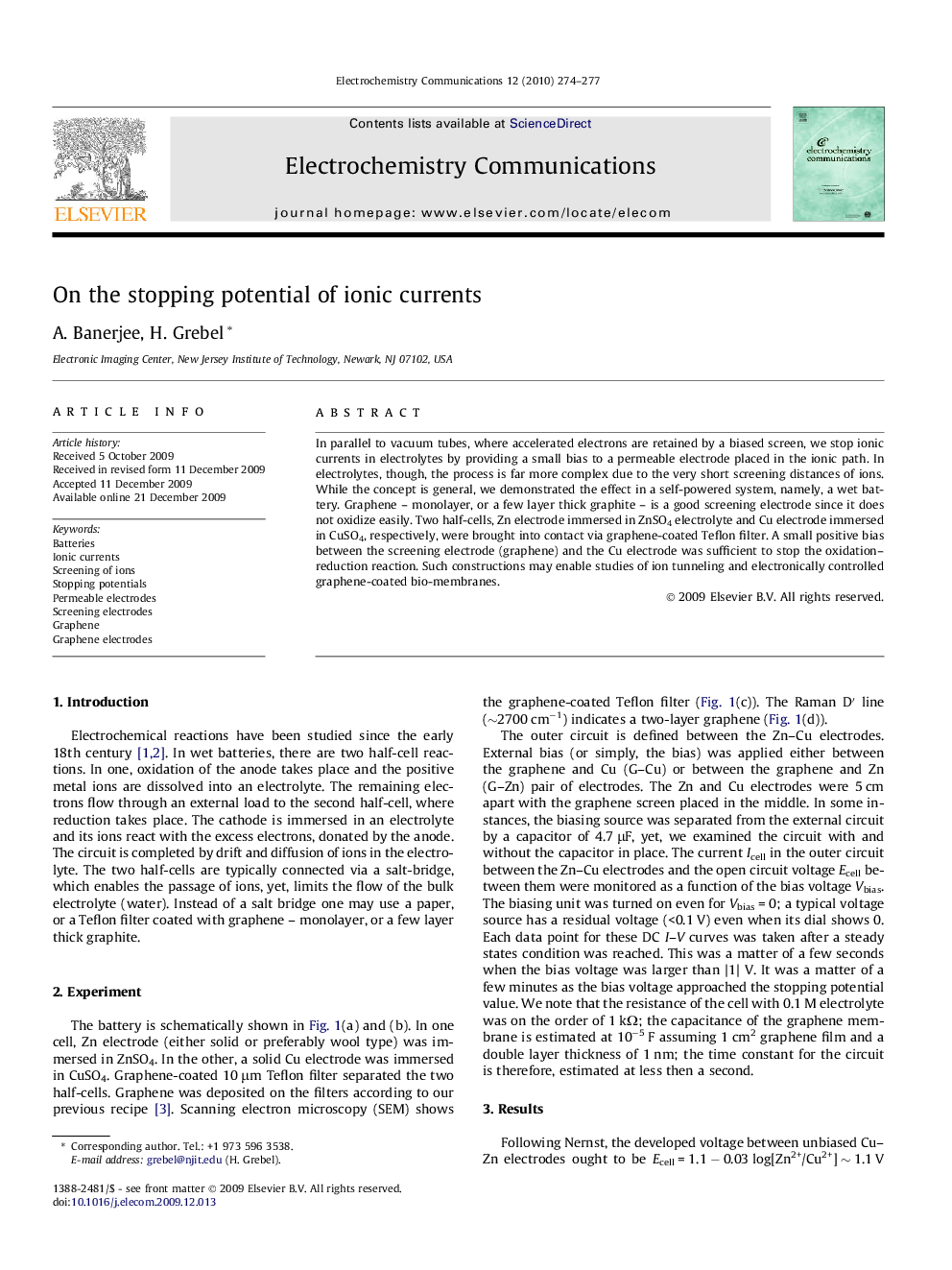| Article ID | Journal | Published Year | Pages | File Type |
|---|---|---|---|---|
| 180727 | Electrochemistry Communications | 2010 | 4 Pages |
In parallel to vacuum tubes, where accelerated electrons are retained by a biased screen, we stop ionic currents in electrolytes by providing a small bias to a permeable electrode placed in the ionic path. In electrolytes, though, the process is far more complex due to the very short screening distances of ions. While the concept is general, we demonstrated the effect in a self-powered system, namely, a wet battery. Graphene – monolayer, or a few layer thick graphite – is a good screening electrode since it does not oxidize easily. Two half-cells, Zn electrode immersed in ZnSO4 electrolyte and Cu electrode immersed in CuSO4, respectively, were brought into contact via graphene-coated Teflon filter. A small positive bias between the screening electrode (graphene) and the Cu electrode was sufficient to stop the oxidation–reduction reaction. Such constructions may enable studies of ion tunneling and electronically controlled graphene-coated bio-membranes.
